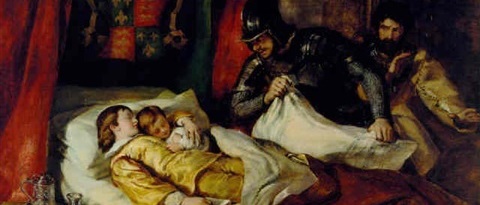Princes in the Tower
Posted on 17th July 2021
On 21 June 1483, Edward, Prince of Wales the thirteen-year-old heir to the English Throne and his ten year old brother Richard, Duke of York, were seen playing together in the grounds of the Tower of London, they would never be seen again. What happened to them and who was responsible for their disappearance remains one of the most enduring mysteries in English history. The man traditionally held culpable for their disappearance and probable murder was their uncle the sinister, hunch-backed, pathological Richard, Duke of Gloucester, the soon to be King Richard III. Yet was he the depraved monster so described in the works of William Shakespeare among others or merely the victim of remorseless negative Tudor propaganda.
The Princes father King Edward IV had fought long and hard to secure the Crown and his hold on it was often to be uncertain. It had been won as a result of the on-going Wars of the Roses between the Houses of York and Lancaster that family feud of complex alliances, broken promises and savage retribution.
His father, Richard of York, had originally laid claim to the throne and openly rebelled against King Henry VI. When he was killed at the Battle of Wakefield on 30 December 1460, his claim passed to his son.
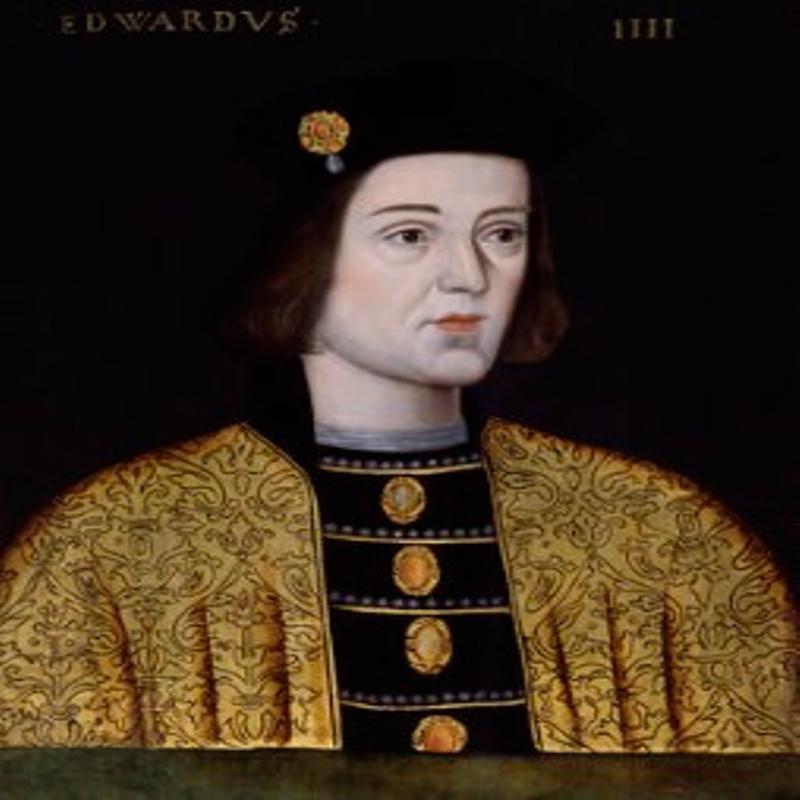
Even though Edward was only nineteen years of age on 29 March 1461, he led his army to a comprehensive victory over the forces of the King at the Battle of Towton. Following his victory, he seized the crown and it seemed, for the time being at least that the Wars of the Roses were over.
Edward had only been able to triumph however, with the help of Richard Neville, Earl of Warwick known as The Kingmaker. When he refused to marry his daughter as previously agreed thereby diminishing Warwick’s own dynastic ambitions they fell out. He chose to wed instead the woman he loved, the formidable Elizabeth Woodville, of whom it was said "she was the most beautiful woman in England with heavy lidded eyes like those of a dragon," and by all accounts had the tongue of a dragon to match.
The Woodville family were detested as ambitious upstarts who had previously been allied to the House of Lancaster. Warwick believing, he had been deceived now changed his own allegiance and conspired in secret with Edward's brother the Duke of Clarence to put Henry VI back on the throne. Taken completely by surprise Edward was forced to flee ignominiously to France along with his younger brother Richard who, as he always would, stood loyally by his side.
Throughout his short period in exile Edward plotted his return and convinced his brother Clarence to yet again change sides. With his forces much reduced Warwick was defeated and killed at the Battle of Barnet on 14 April 1471. He then went onto to eliminate any lingering Lancastrian resistance at the Battle of Tewkesbury and not long after his triumphal entry into London he had Henry VI murdered. Edward was again King of England, for the second time.
Despite Edward's victory the plots against him continued. His brother Clarence his own ambitions thwarted once again conspired with others for his overthrow. Learning of this Edward's forbearance finally snapped. He had Clarence arrested and ordered his death. Under pressure from his mother, he permitted Clarence to choose his own means of execution. He chose to be lowered headfirst into a vat of Malmsey wine. The execution was supervised by his younger brother Richard.
With the only remaining claimant to the throne Henry Tudor in exile abroad, Edward was able to rule for the first time over a country at peace for the first time and he was to prove himself an able administrator but the physically imposing Edward, who at 6'4" is perhaps the tallest ever English King, with the threat of war removed became lazy and dissolute.
On 9 April 1483 aged just 40, he died, probably of pneumonia. Just before his death he named his brother Richard Lord Protector during his son's minority. He knew that he had left his Dynasty in safe hands, for there was no one he trusted more.
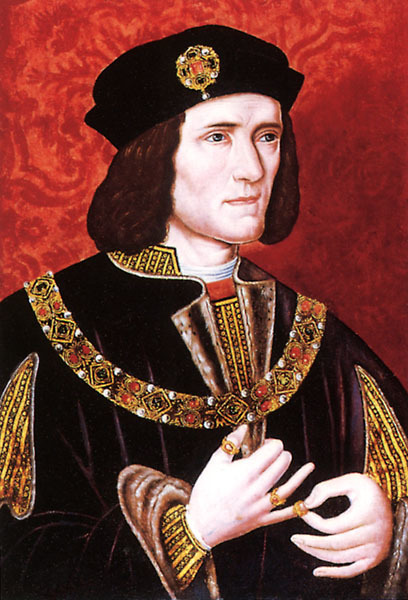
Though he rarely spoke of it, no doubt with the fate of his brother Clarence fresh in his mind, Richard had long believed Edward to be illegitimate. The physical differences between the two of them were stark. Richard was short at no more than 5'7". He had dark hair and eyes, a pallid almost sickly complexion and was thin and brittle in appearance. Indeed, he was the spitting image of his father and so unlike his tall, blonde, athletically built and ruddy complexioned brother.
Edward had also been born in Rouen to very little fanfare for a first born and prospective heir to the throne. The rumours of Edward's illegitimacy were to persist throughout his reign and even his own mother referred to it. He was by all accounts the issue of a liaison between his mother and an English bowman named Blaybourne.
Despite Richard's own doubts as to his brother's legitimacy and thereby his right to rule he never took issue with it and remained loyal to him throughout his life, for which he was richly rewarded. He had estates throughout England and had been appointed in turn Chief Constable, Grand Chamberlain and Lord High Admiral. He had been to all effects Edward's chief enforcer. It had not made him popular.
Richard had been undoubtedly close to his brother, but he despised his Queen, Elizabeth Woodville, whom he considered little better than a whore. She in turn feared for her life and her children's safety and despite Richard's emollient words she sought sanctuary in an Abbey. She would eventually be reconciled with Richard and return to Court, but she still didn’t trust him even though he had been a good uncle to her children and so continued to conspire with his enemies against him.
Following Edward's death, it fell to Earl Rivers the Queen's brother and Head of the Prince of Wales's Household, to escort the young Prince safely to London for his coronation but he was intercepted on his procession south by Richard who informed him that he was taking the young Prince into his charge. He then had the Earl imprisoned at nearby Pontefract Castle where he was later executed.
Richard was now advised by the powerful Lord William Hastings who had always been ultra-loyal to the House of York to secure the Prince in the Tower of London for his own safety and where he would later be joined by his younger brother, Richard.
With the Protectorate in place and the Coronation due Richard now invited Lord Hastings and other leaders to a meeting to discuss how they should proceed. Richard who was an earnest man not noted for his sense of humour appeared to be in a particularly amiable mood that day and during the proceedings he ordered that some strawberries be brought. He then excused himself for a moment. When he returned, he was an accompanied by an armed guard. Standing before Lord Hastings, he angrily denounced him as a traitor before having him dragged out and beheaded in the courtyard. It was the first execution ever to be carried out in the grounds of the Tower of London.
Despite his execution Lord Hastings was never formally attainted with the charge of treason and his family were permitted to retain his title and estates whilst his widow Katherine was placed under Richard's personal protection. This casts doubt on whether Richard truly believed Hastings to be a traitor at all. If it was indeed Richard's aim to usurp the throne, then he may have thought it wise to rid himself of a man whose loyalties were known to be with the young Prince.
Not long after the execution of Lord Hastings, Richard declared his brother, Edward's marriage to Elizabeth Woodville void on the grounds that he had previously been betrothed to another woman Eleanor Butler, thereby making his deceased brother's children illegitimate. With the bastardisation of his nephews Richard was now heir to the throne.
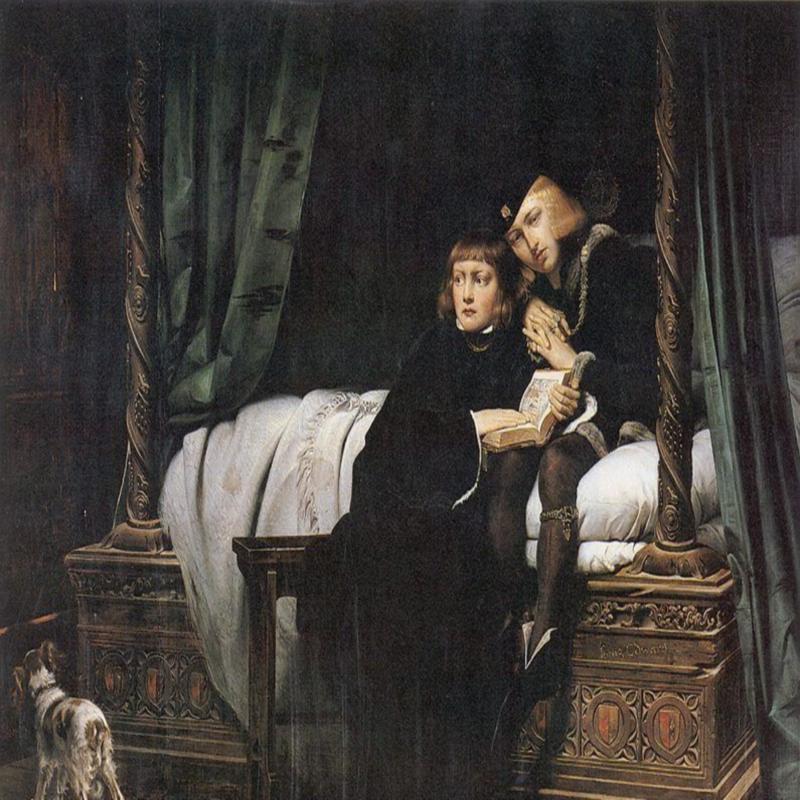
The two young Princes were for a time seen regularly playing in the grounds of the Tower of London and to those who witnessed them play they appeared happy and carefree but it might not have been all as it seemed for, perhaps fearing for his life, Edward had requested a remission of his sins. It is not known if they were killed on 22 June, or indeed that they were killed at all, but it is certain that they were never seen thereafter.
On the same day that the Princes were last seen alive a sermon was preached outside St Paul's Cathedral in which it was announced that the Prince of Wales and his younger brother were bastards and that Richard, Duke of Gloucester was now the rightful King. It was at this point that Richard was supposed to appear on the balcony to accept the acclamation of the people of London. But he had been delayed and by the time he appeared the crowd had dispersed. Still, he was crowned King Richard III on 6 July, and his coronation confirmed by Parliament the following January.
There was no doubt that Richard had usurped the throne but there was also no doubt that in his mind he had every right to do so. But was he responsible for murdering the Princes in the Tower?
It was true that he could not have ascended to the throne without their removal but having already declared them illegitimate why murder them. It has always been assumed that as the most obvious beneficiary of their deaths then he must have been responsible. But there is little evidence for this other than hearsay and conjecture, and there are other suspects.
One possible suspect in the disappearance of the Princes was Henry Stafford, 2nd Duke of Buckingham. He had at one time been Richard's effective right-hand-man but seeing his opportunity to press his own claim as a descendant of Edward III's son John of Gaunt he rebelled in October 1483. Like Richard he could have had no claim to the throne while the Princes were alive and he would have had access to them. He could very easily have had them killed without Richard's knowledge. Even after he was arrested and sentenced to death for treason he made no accusation against Richard with regards to the Princes.
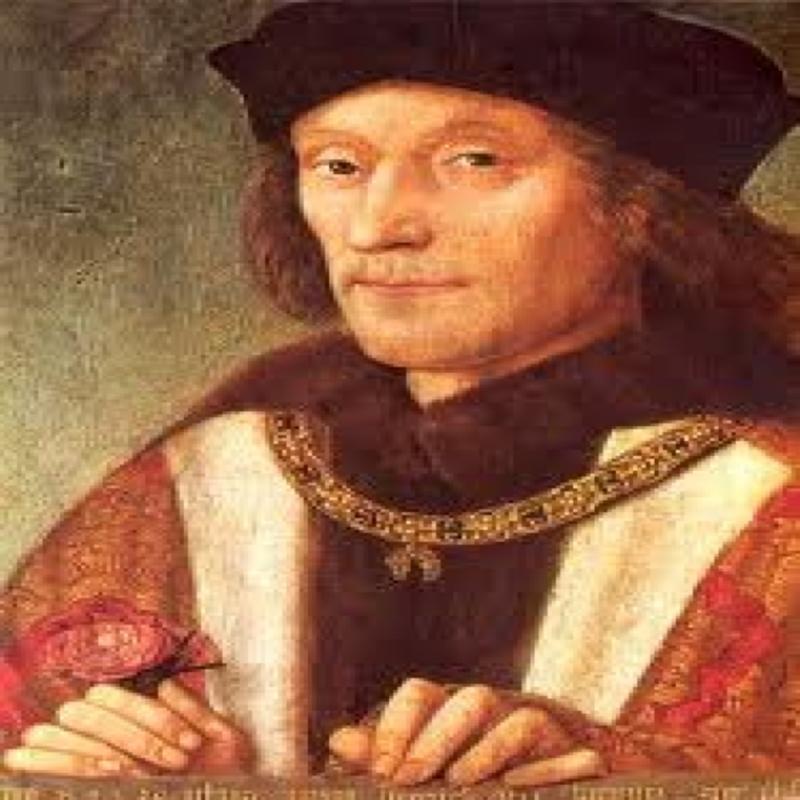
Indeed, it could be said that the man who benefited most from the disappearance of the Princes was Henry Tudor. After all, he had little if any legitimate claim to the throne beyond his own vainglorious ambition, or at least that of his mother Margaret Tudor. He was after all the illegitimate son of the third son of Edward III. But he was the last remaining candidate to the throne that the House of Lancaster had.
His lack of legitimacy meant that any other candidates to the throne would have to be eliminated. But he would have had little opportunity to do so until the summer of 1485 and Richard's death at the Battle of Bosworth, unless of course the murders were committed on his behalf. The Duke of Buckingham had allied himself with Henry before his execution and could easily have committed the deed to prove his loyalty.
If the Princes had still been alive when he had arrived in London, then he would no doubt have had them disposed of. He didn't even declare them dead until more than a year after he ascended the throne, and then made no effort to either find or produce the bodies. This allowed future pretenders to the throne claiming to be one of the murdered Princes to emerge. Also, despite denouncing Richard as a bloody tyrant he never accused him of murdering the Princes. Even so Tudor propaganda proclaiming Richard to have been a monster of unspeakable wickedness and depravity and designed to blacken his name at every turn was to continue for decades after his death.
Then again if Richard was not responsible for the disappearance of the Princes why did he make no comment to that effect? If they were still alive, why did he not produce them to quash the rumours that were at the time circulating as to their whereabouts and well-being?
In 1502 James Tyrrell, who had been a trusted servant of Richard III's, confessed to murdering the Princes at his behest but the confession had been extracted under torture. He was also unable to say where the bodies were buried other than to say that they had been removed from the Tower. Also, he was never accused of the crime and was executed soon after on 6 May 1502 for treason.
In his History of Richard III, Sir Thomas More elaborated upon the Tyrrell confession. He claimed that the two Princes were smothered in their beds by Myles Forest and John Dighton on the orders of James Tyrrell. The bodies were then buried he claimed, "At the stayre foote, melely depe in the grounde under a great heape of stones".
More goes on to say that the bodies were soon after removed and buried elsewhere, but then More was writing as an enthusiastic propagandist for the Tudor regime.
In 1674, during repairs to the Tower of London the skeletons of two children were discovered in a coffin. Charles II assumed that they were the bodies of the two Princes and had them reburied with great solemnity. An autopsy carried out on the remains in 1933 failed to determine either the sex of the skeletons or how exactly they died, though it was agreed that they were the remains of children between 10 and 16 years of age.
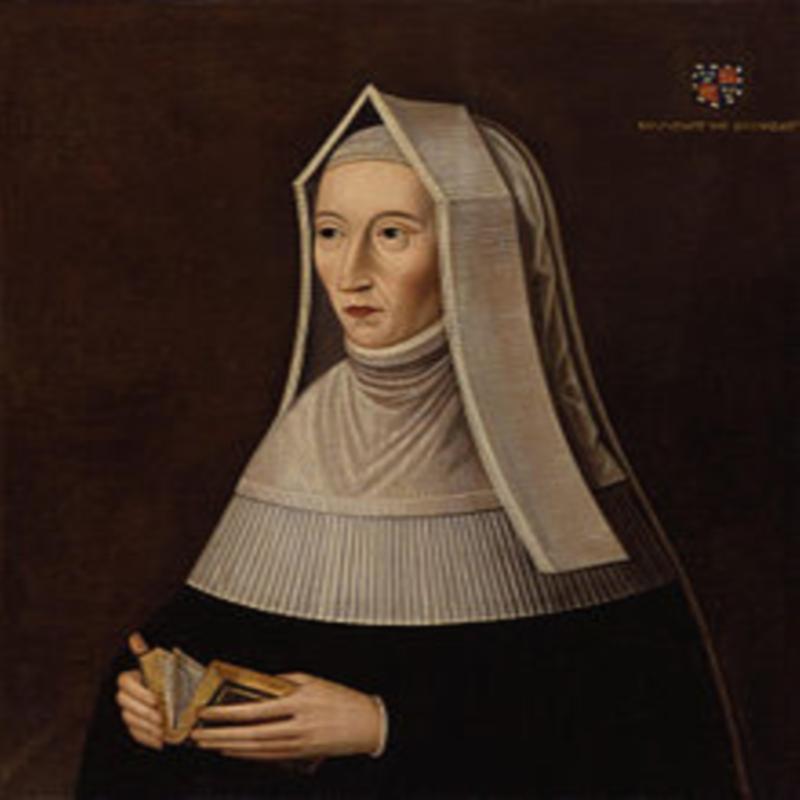
It has also been claimed that Henry’s formidable mother Margaret had found the Princes still in the Tower of London upon her son’s arrival in the city and rather than have them exiled or killed kept them imprisoned for the rest of their lives.
This may not be as unfounded or ridiculous as it might appear. Ever since the birth of her only child Henry, she had sought and conspired to legitimise and provide for him the recognition that had always been denied to her and her family as an illegitimate line of the House of Lancaster. Now that he had secured the throne without any clear rival claimants there is little doubt, she would not have flinched at disposing of the young Princes had they been found alive.
Both Margaret and Henry were also aware that he was a usurper frowned upon by God. Indeed, it was a fact that was to haunt Henry for the rest of his life, and it was often remarked upon how badly he slept, to heap one sin upon another with the murder of the true heirs to the throne would be a deed of unconscionable wickedness.
The mystery surrounding the fate of the ‘Princes in the Tower’ remains.
Tagged as: Ancient & Medieval, Monarchy
Share this post:





